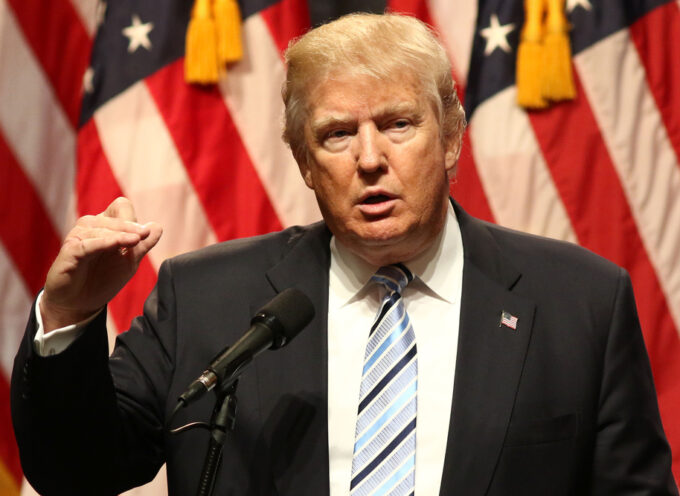Since the early days of the 2016 election cycle, we have been told that we are in the midst of a “populist” moment. During the primaries, the Beltway brains and establishment candidates of both political parties categorized Donald Trump and Bernie Sanders as populists. This was intended as a slur; “populists” were not people to be taken very seriously. In retrospect, the establishment candidates and many politicos seemed to have grossly misunderstood the weight and force of the emerging populist movement. What they had intended as a slur was taken as a badge of honor by many everyday Americans.
Indeed, populism has moved to the main stage. We are experiencing an American moment characterized by a surge of resentment on the part of everyday citizens against the “establishment elites” of both political parties. Populism thrives on this kind of resentment. Additionally, America’s populist moment, it turns out, is part of a larger trend encompassing a number of Western nations.
But what exactly is “populism”? If populism can be found on both sides of the American political spectrum, in various nations, and in movements as diverse as the anti-capitalist social democratic Podemos party in Spain and the ethno-nationalism of France’s National Front, what is its essence? How should we conceive of it?
To get a handle on what connects all these movements and why they each bear the label “populist,” we should perhaps begin with understanding what populism is not, before trying to say what populism is.
Populism should not be equated with democratic rule. Even though democratic rule and populist moments both involve everyday citizens giving voice to their opinions, populism can be very undemocratic in its desire to silence other voices. Despite what some populist proponents might say, populism is not the purest form of democracy.
Populism is not merely a reaction to globalization or immigration. Even though globalization and immigration are indispensable aspects of the American conversation, other issues clamor for attention as well, such as resentment about United States’ military interventions, domestic surveillance, and Wall Street corruption.
Populism–and you may want to sit down for this one–cannot be reduced to right-wing nationalist movements. While America’s populist surge has been most successful in its right-wing nationalist manifestation, it also finds expression in left-wing anarchy.
Most significantly, populism is not an ideology. Unlike many other “isms,” which tend to summarize an ideological posture, populism is more of a reactionary disposition than a coherent ideology. It is the uprising of ordinary citizens against powerful “elites” who they view as overbearing, self-serving, and out of touch. It is the revolt of everyday people who believe that their views and values are shared by many other citizens, but that they remain unheard and unrepresented among the powerful elite. Populism is reaction built on frustration and fueled by friction. Thus populist politicians are those who not only tap into the concerns of these ordinary citizens, but often agitate and incite those citizens, setting aside democratic procedures and legal niceties to enact public opinion.
Although populism is not itself an ideology, it often taps into ideological resources as a means to an end. For example, many economically-frustrated working class white populists initially hitched their wagons to Occupy Wall Street. When this lost steam, they followed Bernie Sanders’ socialism. When that movement appeared dead in the water, they jumped ship and joined up with the battleship that is Trumpism. Ideologically speaking, Occupy Wall Street and Donald Trump should not be pulling from the same demographic. But to understand populism, we must pay attention to populists’ grievances and goals rather than assigning them to a previously-existing ideological category.
Daniel Hannan has argued convincingly that the various populist movements in America and Europe (especially the U. K.) share three central grievances and concerns. First, they resent the Iraq War, which they believe was launched on the basis of lies told by the American and British administrations, lies which average citizens paid for through shed blood and taxes. Second, they resent the 2008 stock market crash and subsequent recession, which was caused by greedy bankers who were bailed out by the government at the expense of average Americans. Third, they protest the advent of mass immigration. As populists see it, the mass influx of foreigners provides nothing but benefits (e.g. inexpensive labor) for the elite and nothing but costs (e.g. job competition and cultural tension) for the lower and middle classes.
Hannan points out that American and European populism are different because of the varying political histories, institutions, and systems in which they are embedded. Consider that the United States emerged from the 1920s Great Depression with its democracy intact and with power being shared meaningfully and democratically. Europe, on the other hand, emerged from the Great Depression with its democracies damaged, steadily concentrating power in the hands of elites whose power served to further secure their own rule and enrichment at the cost of the populace. The advent of the European Union further took power out of the hands of citizens and democratically elected legislatures.
Hannan’s analysis is perceptive. America’s relative democratic stability has allowed it to absorb several waves of populism. As a nation, we expect periodic flowerings of populism. Thus our populist uprisings have followed a common pattern in which a populist contender disrupts the status quo, only to see the populists begin to morph with the old order, forming a fusion of old and new and thus providing a fresh way forward. An apt example is the wave of populism in the 1850s, which birthed the Republican Party in response to the racism of Southern Democrats. In fact, Conrad Black has even argued that in America, populist movements are sometimes the only way to bring change to two major parties that possess nearly equal support by a divided populace. My hope is that our nation can absorb the current wave of populism, drawing upon its best insights but eschewing its vices.
What are populism’s best insights? And its vices? This blog series will focus on both by evaluating populism through the lenses of economics, cultural identity, and politics.
Subscribe
Never miss a post! Have all new posts delivered straight to your inbox.








Speaking for myself, I am angered by the fraudulent allegations used to justify the Iraq War and by the events of 2008, but immigration is not nearly as big an issue for me as I know it is for many others. The fact that I do not believe the official narratives regarding the Oklahoma City Bombing and the events of 9/11/2001 is a far more important driving force in causing me to hold views that may be considered populist. Ever since the assassinations of the 1960’s and the revelations concerning the MK Ultra program, I have become increasingly mistrustful of our political system. Nothing I have seen or heard in the years since has changed my mind–in fact, I believe that our problems have worsened to the point where we are finding ourselves in an existential struggle with economic and political elites who care absolutely nothing about our desire for life, liberty and the pursuit of happiness and who have devised an elaborate system for milking our country like a cow for their own enrichment. Only because of the corruption of our mainstream media has the mass of the population been as docile and quiescent as it has. But thanks in good measure to social media, people are slowly wising up. It’s too bad that many populists are looking for their enemies in the wrong places, but it’s great to see that they are no longer asleep.
Roger, thank you. For my own interest and the sake of those reading this article and your comments, will you follow up on your comment about many populists looking for their enemies in the wrong places? Which are the wrong place? And which are the right places? as you see it.
I would say to fellow populists: your enemy is not the undocumented immigrant, or the ordinary legal immigrant, or the family of a different race or religion down the street. Your enemy is not the poor person struggling to survive, or the disabled person, or the ugly person, or the person with gender identity issues. Your enemy is not the person who supports a different political party from the one you support.
Your enemy IS the Wall Street hedge fund manager who defrauds his clients; the lobbyist who corrupts senators and members of Congress; the bought-off judge or politician; the amoral civil servant who goes along to get along; the debased journalist or TV personality who perverts the truth for a six- or seven-figure salary; the huge corporation that buys off scientists to lie about the safety of its pharmaceuticals or weedkillers. Your enemy is the sort of person who will sell his soul or his firstborn to get that big house on the hill; that New York suite; that big boat; that chance to make it big in the movies or on stage. Your enemy is the person who abuses authority, treating a position of public trust as his personal enterprise or misusing a nongovernmental organization to exploit the people it is supposed to be helping.
I could go on and on, but this should give you some notion of my point of view.